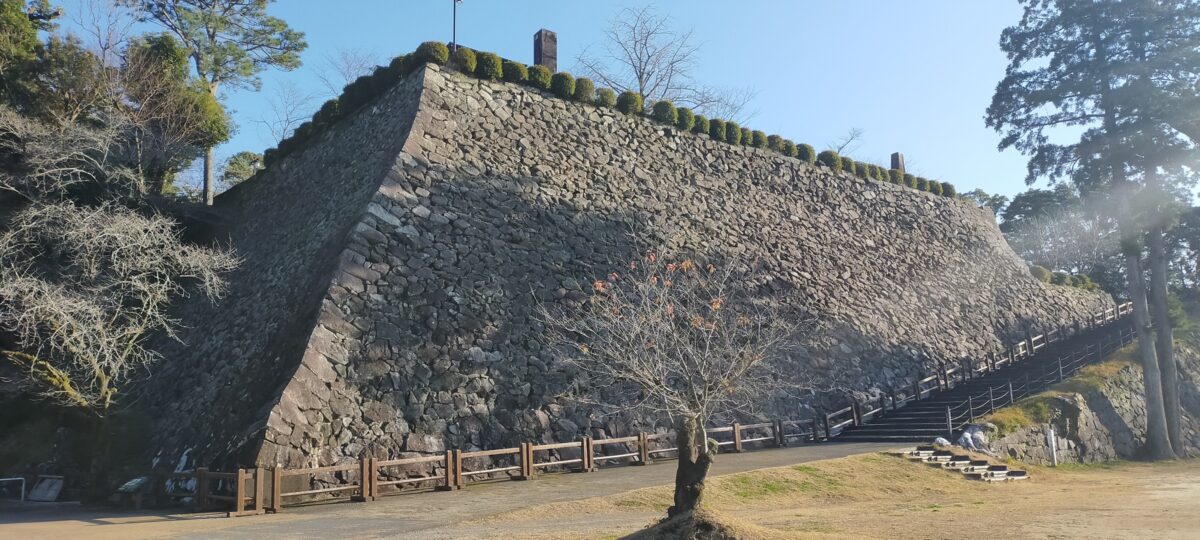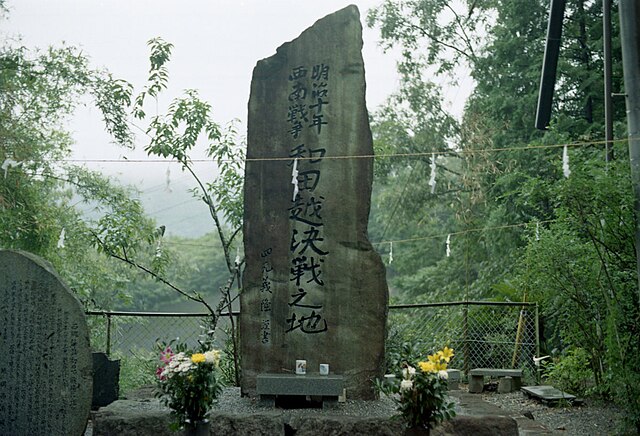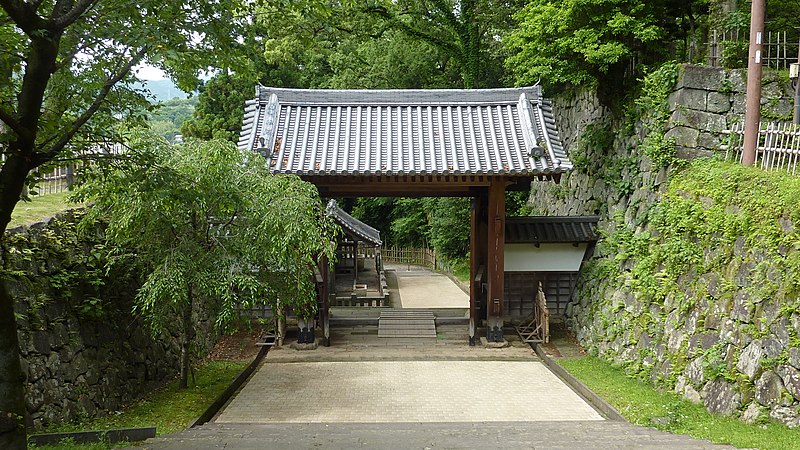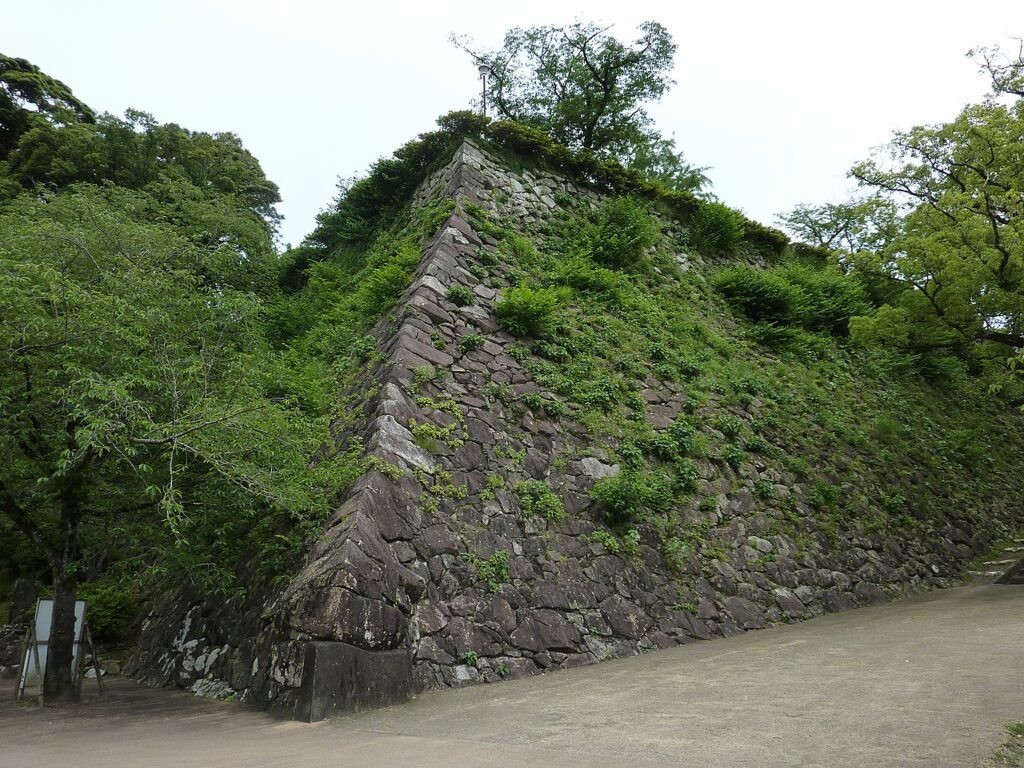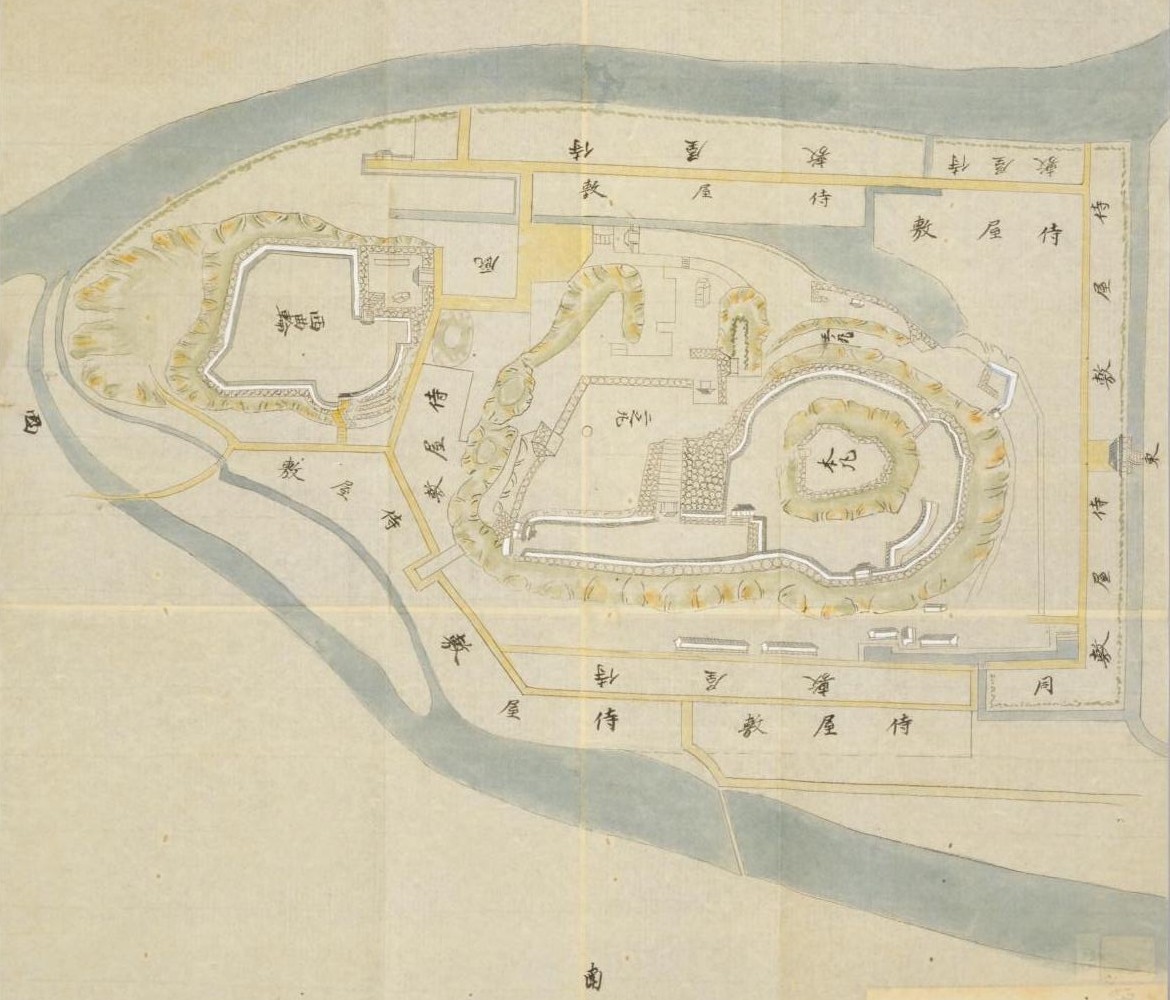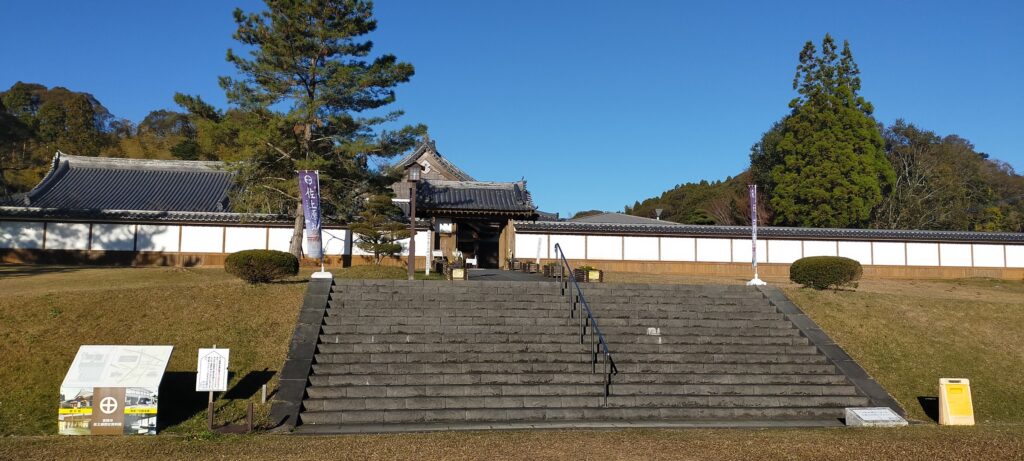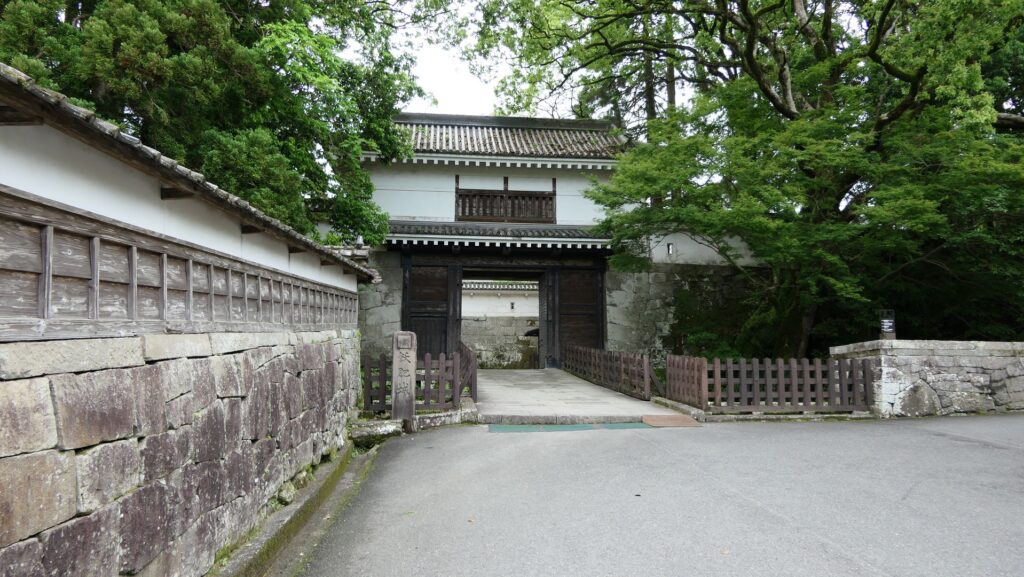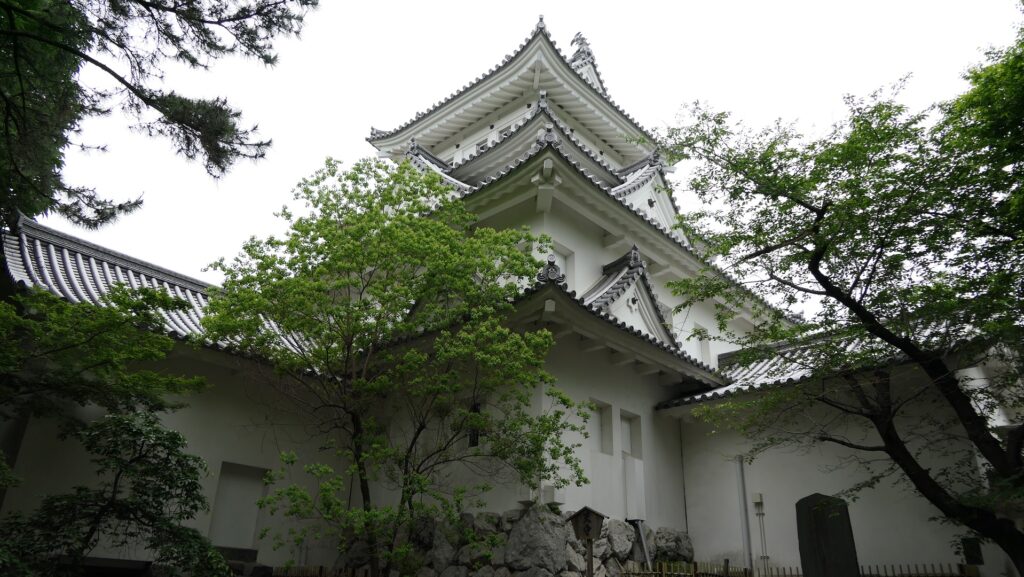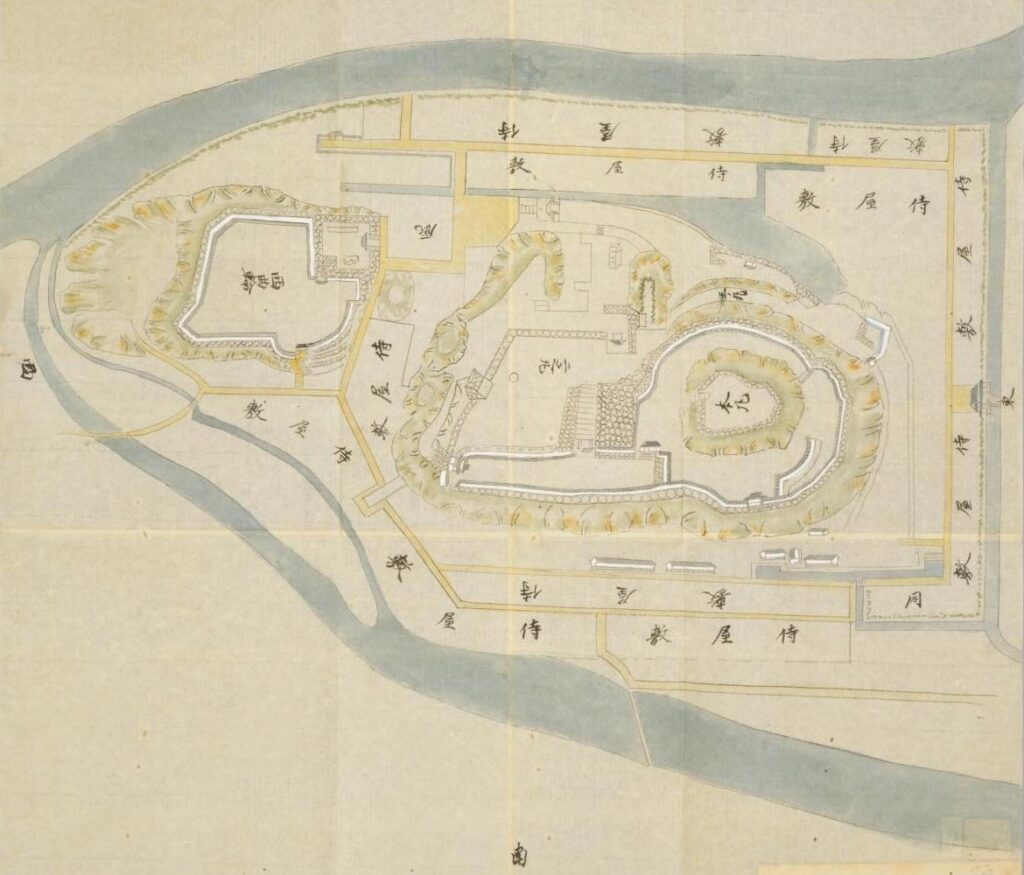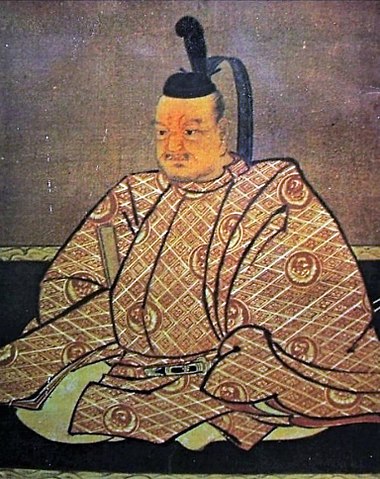Features
Main Enclosure, Final Strongpoint of Castle
You can next walk on the stone steps beside the stone walls to the Main Enclosure. The route turns left, enters a square space surrounded by other stone walls and turn left again to enter. This square space is called Masugata for protecting the entrance of the enclosure, where the gate buildings were also built on the walls. The inside of the Main Enclosure is an empty square now like the Second Enclosure, so it has a good view point of the city area. It must also have been the final strongpoint of the castle, which could use the 1,000 Murder Stone Walls to repel enemies.
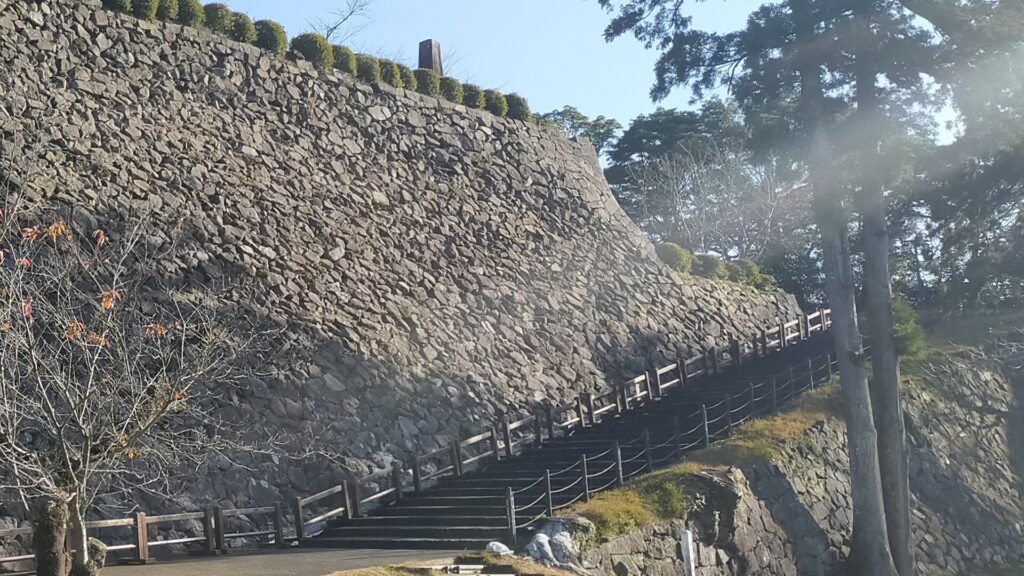
The top of the hill next to the Main Enclosure is the Main Tower Enclosure or Base which actually didn’t have the Main Tower. The enclosure is small which could rather have been used as a lookout. There is a bell tower which the keeper still rings the bell 6 times a day at designated times. It has been done for over 140 years since 1878 after the former Drum Turret was burned down during the Seinan War in 1877. It is simple thing, but it is very rare to continue to do so without any holidays. The Three-level Turret was built below the enclosure probably as the substitute of the Main Tower. However, it unfortunately burned down in 1682 and only its stone wall base remains now.
Bell Tower still announces Time

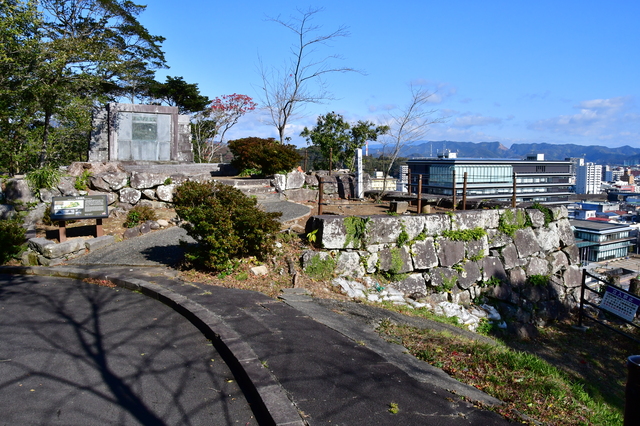
If you have time, I recommend visiting the western side of the Second Enclosure which was also surrounded by great stone walls. These stone walls were built for preventing enemies from attacking the castle and the Inner Moat was built outside of it as well. However, the outside area was turned into modern residences just across a narrow path. Therefore, you can see the great stone walls close by and an interesting contrast with many houses.
Stone Walls close to Residential Areas
The aerial photo around the castle, the stone walls of the Second Enclosure are close to residence areasMy Impression
I didn’t know about Mototane Takahashi who built the castle and the story of the 1,000 Murder Stone Walls at all before I visited the castle ruins. I think one of the pleasures of visiting castle ruins is that it will make you interested in what you really see and think much more than just reading about them or watching media.
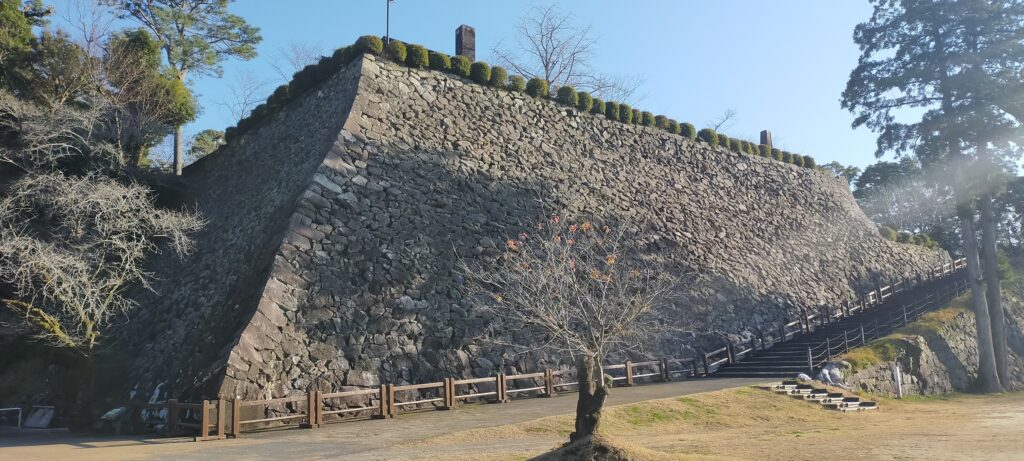
How to get There
If you want to visit the castle ruins by car, it is about a 10 minute drive away from Nobeoka IC on the Higashi-Kyushu Expressway. There are several parking lots for visitors around the ruins.
If you want to use public transportation, it takes about 20 minutes on foot to get there form JR Nobeoka Station. You can also take the Miyazaki-kotsu bus bound for Kyushu-Hokenfukushi-Daigaku from the station and get off at the Shiyakusho-mae bus stop or take the Machinaka-junkan bus on the Uchimawari Line from the station and get off at the Kyuden-mae, Shiyakusho-nishi bus stop.
For visitors from Tokyo or Osaka: Get the JR Line at Miyazaki Airport after using a plane.
That’s all. Thank you.
Back to “Nobeoka Castle Part1”
Back to “Nobeoka Castle Part2”

